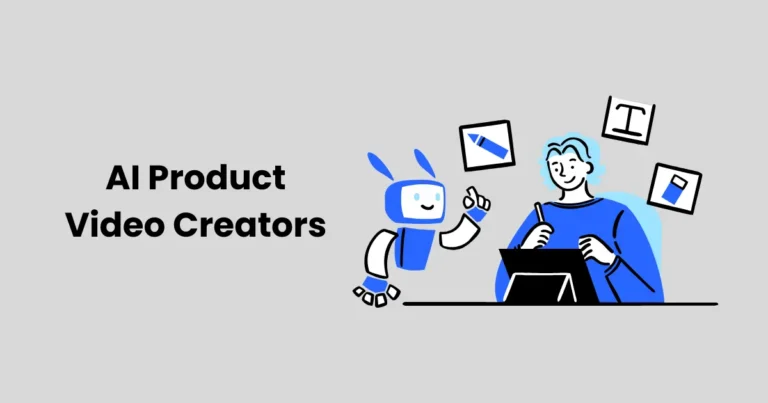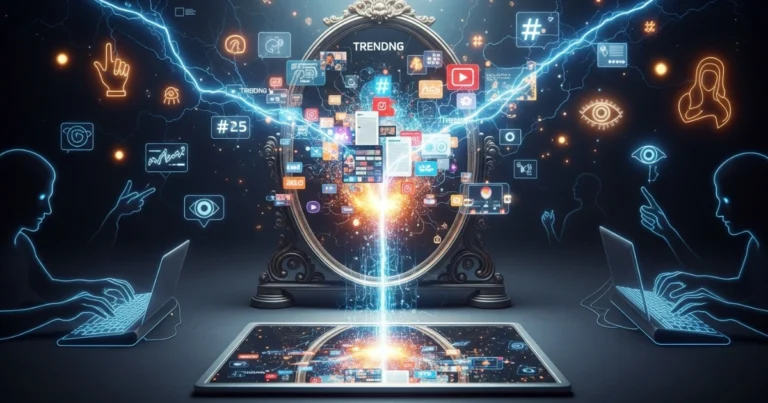Workflow Clarity for Creators: Streamline Your Creative Process

Contents
- 1 Why Workflow Clarity Matters for Creators
- 2 Key Elements of Workflow Clarity for Creators
- 3 Strategies to Achieve Workflow Clarity for Creators
- 4 Tools to Enhance Workflow Clarity for Creators
- 5 Overcoming Common Workflow Challenges
- 6 Real-Life Examples of Workflow Clarity for Creators
- 7 Measuring the Success of Your Workflow
Workflow clarity for creators is the foundation of a productive and fulfilling creative process. Whether you’re a writer, designer, musician, or content creator, organizing your tasks and ideas can transform chaos into a seamless flow of productivity. In today’s fast-paced digital world, creators often juggle multiple projects, tight deadlines, and endless inspiration sources. Without a clear workflow, it’s easy to feel overwhelmed, lose focus, or miss opportunities. This article explores practical strategies, tools, and techniques to achieve workflow clarity, helping you maximize your time and creative output. By implementing these methods, you’ll not only streamline your process but also enhance the quality of your work.
Why Workflow Clarity Matters for Creators

The Challenges of a Disorganized Workflow
Creators often face unique challenges that make workflow clarity essential. For instance, managing inspiration, deadlines, and revisions can quickly become chaotic without a structured approach. A disorganized workflow leads to missed deadlines, burnout, and subpar creative output. Moreover, scattered ideas and unclear priorities can stifle your ability to produce consistently. By contrast, a clear workflow empowers you to focus on what matters most, ensuring you maximize your time and creative energy.
Benefits of a Clear Workflow
A streamlined workflow offers numerous benefits. First, it reduces stress by providing a clear roadmap for your tasks. Second, it enhances efficiency, allowing you to complete projects faster. Third, it fosters creativity by giving you the mental space to explore ideas without distractions. Ultimately, workflow clarity for creators ensures you can produce high-quality work while maintaining a healthy work-life balance.
Key Elements of Workflow Clarity for Creators
To achieve workflow clarity, you need to focus on several key elements. These include goal setting, task prioritization, time management, and tool utilization. Let’s dive into each of these components to understand how they contribute to a streamlined creative process.

1. Setting Clear Goals
Clear goals are the backbone of any effective workflow. Without a defined purpose, your efforts can become scattered, wasting valuable time. To set effective goals, use the SMART framework: Specific, Measurable, Achievable, Relevant, and Time-bound. For example, instead of aiming to “write a book,” set a goal to “write 1,000 words per day for the next 30 days to complete a 30,000-word draft.” This approach provides clarity and direction, ensuring you maximize your time.
Actionable Tip: Write down your goals and review them daily. Use a journal or digital tool like Notion to track progress and stay motivated.
2. Prioritizing Tasks Effectively
Not all tasks are created equal. To achieve workflow clarity for creators, prioritize tasks based on urgency and importance. The Eisenhower Matrix is a powerful tool for this purpose. It categorizes tasks into four quadrants: urgent and important, important but not urgent, urgent but not important, and neither urgent nor important. Focus on tasks in the first two quadrants to ensure you’re working on what truly matters.
Actionable Tip: At the start of each week, list all your tasks and categorize them using the Eisenhower Matrix. Tackle high-priority tasks first to maximize your time.
3. Mastering Time Management
Time management is critical for creators who want to streamline their workflow. Techniques like time blocking and the Pomodoro Technique can help you stay focused and productive. Time blocking involves scheduling specific time slots for tasks, while the Pomodoro Technique uses 25-minute work sessions followed by short breaks to maintain focus.
Actionable Tip: Use a digital calendar like Google Calendar to schedule time blocks for creative work, administrative tasks, and breaks. Set reminders to stay on track.
4. Leveraging the Right Tools
The right tools can make or break your workflow. From project management platforms to note-taking apps, technology can help you organize tasks, track progress, and collaborate effectively. Popular tools for creators include Trello for project management, Evernote for note-taking, and Canva for design tasks. By integrating these tools into your workflow, you can save time and reduce mental clutter.
Actionable Tip: Experiment with different tools to find what works best for you. Start with free versions to test functionality before committing to paid plans.
Strategies to Achieve Workflow Clarity for Creators
Now that we’ve covered the key elements, let’s explore practical strategies to implement workflow clarity in your creative process. These strategies are designed to help you stay organized, focused, and productive.

1. Create a Centralized Workspace
A centralized workspace, whether physical or digital, is crucial for workflow clarity. For physical spaces, keep your desk clutter-free and organized with only the essentials. For digital workspaces, use platforms like Notion or ClickUp to store all your project files, notes, and schedules in one place. This approach minimizes the time spent searching for resources and keeps everything accessible.
Example: A graphic designer might use a Notion board to store client briefs, design drafts, and feedback in one place, ensuring they can quickly reference materials during a project.
2. Develop a Consistent Routine
Consistency is key to achieving workflow clarity for creators. A daily routine helps you build habits that support productivity. For example, start your day with a 10-minute planning session to review goals and prioritize tasks. Then, dedicate specific hours to deep work, where you focus solely on creative tasks without distractions.
Actionable Tip: Use a habit-tracking app like Habitica to stay accountable and maintain your routine over time.
3. Batch Similar Tasks
Task batching involves grouping similar tasks to minimize context switching. For instance, a content creator might dedicate one day to writing blog posts, another to filming videos, and another to editing. This approach allows you to stay in the same mindset, increasing efficiency and reducing mental fatigue.
Actionable Tip: Identify repetitive tasks in your workflow and group them into dedicated time blocks. For example, schedule all social media content creation for one afternoon each week.
4. Automate Repetitive Tasks
Automation can save you significant time and effort. Tools like Zapier or IFTTT can automate repetitive tasks such as posting to social media, sending client emails, or backing up files. By automating these tasks, you free up time for creative work, enhancing workflow clarity.
Example: A writer could use Zapier to automatically send a draft to their editor via email once it’s uploaded to Google Drive.
5. Regularly Review and Refine Your Workflow
Your workflow isn’t static—it evolves with your needs and projects. Set aside time each month to review your process. Identify what’s working, what’s not, and where you can improve. For instance, if you notice you’re spending too much time on administrative tasks, consider delegating or automating them.
Actionable Tip: Use a journal or spreadsheet to document your workflow review. Note any bottlenecks and brainstorm solutions to address them.
Tools to Enhance Workflow Clarity for Creators
The right tools can significantly improve your ability to achieve workflow clarity. Below is a curated list of tools that cater to different aspects of the creative process.

1. Project Management Tools
- Trello: A visual tool for organizing tasks into boards, lists, and cards. Ideal for managing multiple projects and tracking progress.
- Asana: A robust platform for task management, team collaboration, and deadline tracking.
- ClickUp: A versatile tool that combines project management, document storage, and goal tracking.
2. Note-Taking and Idea Management
- Evernote: A powerful app for capturing ideas, notes, and research in one place.
- Notion: An all-in-one workspace for notes, databases, and project management.
- Obsidian: A note-taking app that connects ideas through a graph-based system, perfect for brainstorming.
3. Time Management Tools
- Toggl Track: A time-tracking tool to monitor how you spend your time and identify inefficiencies.
- RescueTime: An app that runs in the background to track your digital habits and suggest improvements.
- Clockify: A free time-tracking tool for freelancers and creators managing multiple clients.
4. Creative Tools
- Canva: A user-friendly design tool for creating visuals, presentations, and social media content.
- Adobe Creative Cloud: A suite of professional tools for designers, photographers, and videographers.
- Procreate: A digital art app for illustrators and artists working on iPads.
Actionable Tip: Start with one or two tools and gradually integrate others as needed. Avoid overloading your workflow with too many platforms, as this can create complexity.
Overcoming Common Workflow Challenges
Even with a clear workflow, creators may encounter challenges. Here’s how to address some common obstacles to maintain workflow clarity.

1. Dealing with Creative Block
Creative block can derail even the most organized workflow. To overcome it, try techniques like freewriting, mind mapping, or taking a short walk to spark inspiration. Additionally, maintain an idea bank—a digital or physical notebook where you store ideas for future use.
Actionable Tip: Dedicate 10 minutes daily to freewriting or brainstorming to keep your creative juices flowing.
2. Managing Distractions
Distractions, such as social media or emails, can disrupt your workflow. Use tools like Freedom or Cold Turkey to block distracting websites during work hours. Additionally, set clear boundaries with colleagues or family to protect your creative time.
Actionable Tip: Turn off notifications on your phone and computer during deep work sessions to stay focused.
3. Handling Overwhelm
When juggling multiple projects, it’s easy to feel overwhelmed. Break large projects into smaller, manageable tasks and focus on one at a time. Additionally, practice saying “no” to non-essential commitments to protect your time.
Actionable Tip: Use the “two-minute rule” to tackle small tasks immediately, preventing them from piling up and causing stress.
Real-Life Examples of Workflow Clarity for Creators
To illustrate the power of workflow clarity, let’s look at two real-life examples of creators who transformed their processes.

Example 1: Sarah, the Freelance Writer
Sarah, a freelance writer, struggled with missed deadlines and scattered notes. To achieve workflow clarity, she adopted Trello to organize her projects into boards for each client. She also used time blocking to dedicate mornings to writing and afternoons to editing and client communication. By batching tasks and using Grammarly for quick edits, Sarah reduced her workload by 10 hours per week, allowing her to take on more clients.
Example 2: James, the Graphic Designer
James, a graphic designer, felt overwhelmed by client revisions and disorganized files. He implemented a centralized workspace in Notion, where he stored client briefs, design drafts, and feedback. He also automated file backups using Zapier, saving hours each week. By reviewing his workflow monthly, James identified inefficiencies and streamlined his process, increasing his project turnaround time by 20%.
Measuring the Success of Your Workflow
To ensure your workflow remains effective, track key metrics such as project completion rates, time spent on tasks, and overall satisfaction with your creative output. Tools like Toggl Track or RescueTime can provide insights into your productivity. Additionally, seek feedback from clients or peers to gauge the quality of your work.
Actionable Tip: Set quarterly goals to review your workflow’s effectiveness. Adjust your strategies based on data and feedback to continuously improve.
Conclusion
Workflow clarity for creators is not just about staying organized—it’s about unlocking your full creative potential. By setting clear goals, prioritizing tasks, managing time effectively, and leveraging the right tools, you can streamline your process and maximize your time. Additionally, adopting strategies like task batching, automation, and routine-building ensures you stay focused and productive. Whether you’re a writer, designer, or musician, these techniques will help you overcome challenges, reduce stress, and produce high-quality work. Start implementing these strategies today, and watch your creative process transform into a well-oiled machine.






